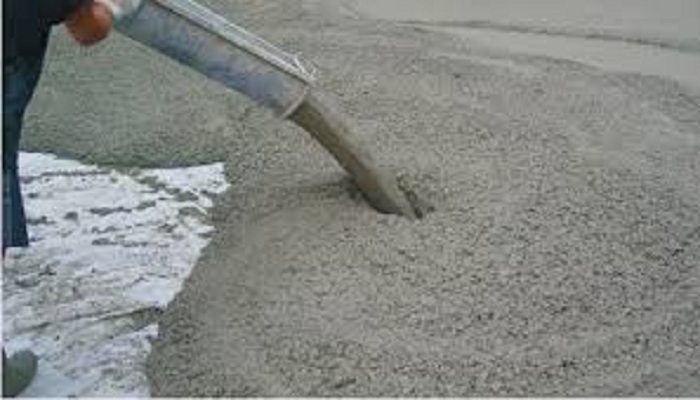Admixtures are those ingredients in concrete other than water, Portland cement and aggregates. Nonetheless, to exploit the potential of concrete and provide flexibility for its use in a various environments and circumstances, extra materials can be added to the concrete during the mixing process to alter its characteristics. These materials are known as chemical admixtures. There are different categories of high performance admixtures depending on their impact on concrete properties.
Also Read:Chemical Admixtures have truly transformed concrete
Choosing an Admixture
Alice Muthoni, the Technical Manager at Mau West Company Ltd; the agent for Penetron International in Kenya emphasizes that; buyers should choose concrete admixtures that have very low or no sulphates and chlorides which affect the strength of the concrete. “The manufactures instructions on the use of the admixture should be strictly adhered to. The buyer should also check the technical data to ensure the admixture is suitable for their project e.g. deep basements require admixtures that can withstand high hydro static pressure, while water tanks/reservoirs require admixtures that are safe and approved for portable water,” explains Alice.
“One has to understand concrete first before they understand how admixtures work/react with concrete. Most African countries have many Technical training institutions but they don’t offer a good course on concrete technology, thus the lack of certified concrete technologists. There are also very few certified concrete labs where concrete materials and the concrete itself can be tested,” affirms Alice.
In a circumstance where the buyer is not sure about the characteristics of the admixture or wants to use it in a unique situation; they should request for a sample early enough and carry out tests. Tone Horvei Bredal of Borregaard, a company that produces raw materials for chemical admixtures comments that materials such as Lignosulfonates from Borregaard are robust admixtures optimized for the use in concrete. They are bio based and thus green and can produce good quality concrete even with high variations in mix design, water amount and dosage changes.
According to Mr. Igor Nikolajev of Gemite, apart from purchasing the admixture from a manufacturer with a track record one should also choose the correct admixture depending on the mix design among other sources.
Moreover, Mr. Patrick McKeown of Surecrete Design adds that research before purchasing an admixture is very important so as to ensure the client goes for the most efficient product that is easy to use; since lack of knowledge is the first step towards failure in utilizing admixtures properly.
Esther Kinako Technical Sales Consultant at Armorsil West Africa® which provides a complete range of construction chemicals, coatings, insulation and concrete waterproofing solutions for the construction industry in all forms concurrently notes that every product sold has a technical data sheet and total compliance to all instructions stated there helps one avoid pitfalls
 Specific admixtures for specific markets
Specific admixtures for specific markets
New technologies in admixtures has received positive impact in the African market including approval from The Architectural Association of Kenya, the Kenya Bureau of Standards, the Municipal Councils of Nairobi and Mombasa.
According to Yapichem Construction Chemicals A.Ş Export Manager-Ms. Gökçen Işık, new techniques for permanent structures, such as prefabricated technologies are some of the upcoming trends that have been approved and accepted in the market. She further adds that Degaset series admixtures are new generation hyper plasticizers with high range water reducing property that leads to increase of early & final strength of concrete. They are used for ready mixed & precast concrete production and at large scale construction projects with the available versions of slump retaining.
According to Dave Brand, the General Manager, Sika Kenya, admixtures play a very important function in concrete despite being the smallest dosage or additive that is put in a cube of concrete. Admixtures are mainly used to reduce the amount of water put in concrete, as too much water causes the concrete to shrink and leads to cracking. They also keep the concrete plastic and workable, and help to avoid slump problems by extending the workability of the concrete especially during transport to the site.
Sika applies different technologies when it comes to production of admixtures. They include lignosulphate technology, naphthalene based technology and the new and higher technology that uses polycarboxylate ether (PCE). The use of the different technologies depends on the country and the circumstances there. For example, PCE is mainly used in Europe mainly due to its narrow work ability window.
However, in Kenya, Sika employs the naphthalene-based technology. Mr. Brand explains that the naphthalene-based superplasticizers are suited for this local market because they have a bigger workability window and are not affected by the differences in quality of cement, stones and river sand that contains clay. “We have developed now some products that are more robust, more tolerant of the aggregates, cements and the sands.” Brand says.
Mr. Green Geoffrey of Mapei in South Africa further adds that, the admixture market is very competitive, with mining and infrastructure projects still at a low. “However, with the commencement of larger investment projects, we can see a rise in innovative solutions that test the previous boundaries of operation. For instance, we see more and more that time is money, and we can offer added value if we can offer solutions that shorten the construction and finishing time,” he affirms.
Contact our contributors
Norway
Kenya
Canada
USA
USA
Yapichem Construction Chemicals
Turkey
Kenya
South Africa









